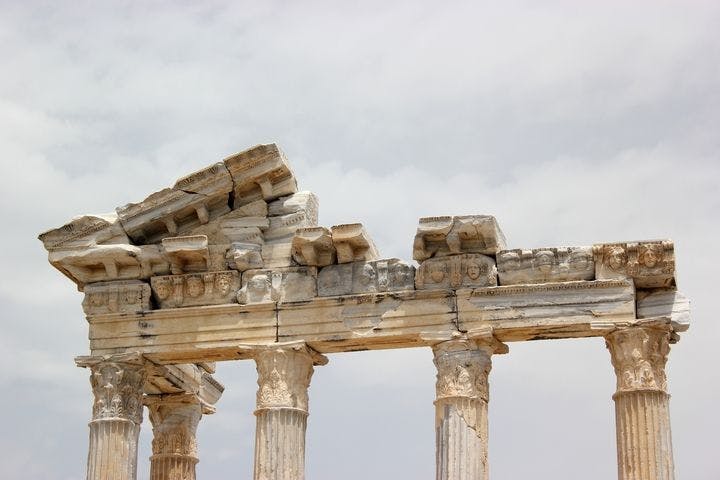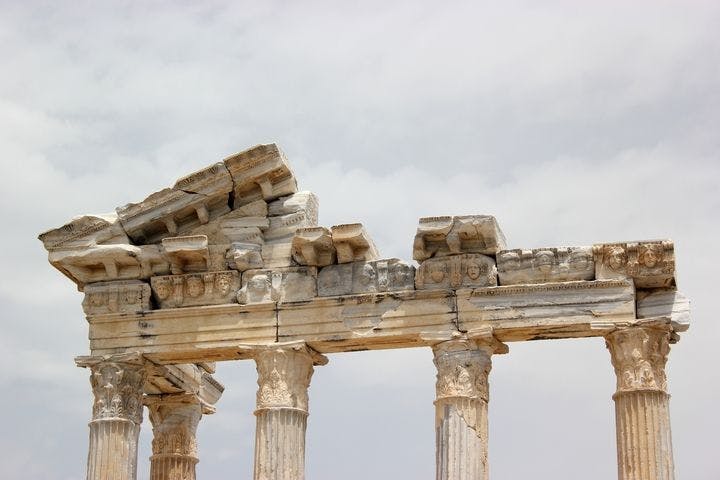Why are so many buildings filled with BMS ruins?


A Building Management System (BMS), also called Building Automation System, is the “automated operator” that drives and monitors the technical assets of a building: HVAC, lights, energy, etc. These systems have been around since the late ’80s. Because of the cost and complexity, they tend to be only present in about 15% of buildings, the largest and most expensive ones.
Buildings use 40% of the world’s energy, and the BMS’ duty, among other things, is to make sure that this energy usage is kept to a minimum. A poorly setup BMS, or the absence of a BMS, will typically result in a building using 10 to 30% more. When you do the math at the world level the building’s energy waste is pretty staggering.
With great power comes great responsibility. And here is the question: is the BMS living up to the world’s expectations?
From what property owners, property managers, and facility managers tell us the BMS does not live up to that expectation. Let’s dive into that.
Why are BMSs thrown out?
While, of course, some happy stories exist of BMSs that work well, with happy property managers, owners, and tenants. But most stories sit on the opposite side.
So often this is what we hear about the BMS:
“Too costly to maintain”, “Not used by our technicians”,“Does not work”, “Nobody knows how to use it”, “We are locked-up by the manufacturer”
Over the recent years, we have seen that despite the large investment of acquiring a BMS, many food retailers, owners of office buildings, residences, as well as other properties took a radical decision and unplugged their BMSs.
Large building portfolio owners stated:
- “We have removed the BMSs in all our buildings, we now control them with the general switches, and we are better off.”
- “Our maintenance technicians no longer look at the BMS; they are simply reacting when the occupants in the building call them.”
These statements are particularly true in mid-size buildings. In larger buildings, unplugging the BMS is probably considered as beyond radical with an asset value write-off that would just be too big.
But at the same time, everybody in the chain works hard to make it work, the manufacturer, the integrator, the maintenance team, the owner. It is not like anyone intends the BMS to fail the end user.
So what happens? Why so often do people involved in operating buildings feel that BMSs are not worth the money, and are usually pretty intense about it.
In my opinion, there are 3 big reasons that date back to the origins of the BMS:
1. Unmanageable hardware
If you ever looked at the architecture schematic of a typical BMS,you saw that it is filled with network layers, a multitude of communications protocols, numerous PLCs, and gateways.

If in the ’90s, there was a rationale for this type of fragmented architecture due to limited electronic capabilities, this is no longer the case. Your phone now has the computing power to run the BMS of a large office building. Despite these huge developments in electronics, BMS architectures have not evolved much due to a silo mentality from the various stakeholders in the industry.
The issue with such fragmented and complex hardware architecture is that it is really hard to configure, test, and maintain. Every intermediate hardware in the network will add significant manual work to the integrator, will reduce the available data and functions in the BMS, and will induce costly maintenance work.
To top it all, the user interfaces of these BMS devices are usually far from intuitive. Some manufacturers actually make a business out of training and certifying integrators. Not exactly the best incentive to make your product easy to use…
A side effect of this hardware diversity is that every single one of them is quite expensive. Electronics’ cost is all about volume. Because the market offering is so fragmented, the volumes are kept low and costs high.
Actually, most of the time, better hardware means better software embedded in the hardware. Let’s look into that.
2. Unmanageable software
This is a big one... I am not sure where to start. Well, let’s start by the beginning then.
About 40 years ago, the BMS industry took a different route from the rest of the software industry. Nowadays, we see some great, intuitive, powerful software solutions for about anything: going from A to B by any possible means of transportation, building and managing a website, hosting a cloud service, etc. So much has become possible in so little time.
We cannot really say the same about the BMS. So little has happened over the past decades. For most, the BMS remains a desktop app locked in a technical room that so few know how to use or even dare to touch.

The technological divergence of the BMS software industry created a shaky foundation for everything that got built on top. But it also created a barrier against more innovation and more competition for better BMS software.
So much can and should be improved:
- Better network configuration. It should not take days or weeks just to make equipment speak with one another.
- Better data modeling. Standard data semantic models deployed quickly are essential for software companies to deliver solutions at scale and not handcrafted one building at a time.
That might sound completely fictional to some, but I am convinced that in 5 to 10 years, standard BMS software will be a thing, with 0 human integration at the code level. Just like what is found today on phones, cars, drones, etc.
When I hear property owners talk about their BMSs, it reminds me of the relationship that so many of us had with the taxis before Uber came in. You did not like it, but you did not have a choice. While for the taxi, the lock-up was due to state regulation, for the BMS, I believe it is due to the way property owners purchase their BMS.
3. The wrong BMS business model
A BMS is just another IT system. It is filled with code, a lot of code. Essentially it is software running on a network.
You probably know it already, something big happened in the software world over the past years: everything went SaaS, Software-as-a-Service. Since 2016 Windows is purchased through a subscription model, so is your accounting software, your CRM, your music, your everything software.
Did you also notice that the quality, availability, the usability of all of it has increased significantly since it is SaaS?
The SaaS vendors have a great intensive to keep you satisfied. They give you the freedom to change, and therefore your decision process to buy their products is shortened. But they have to keep you happy to keep doing business with you.
Another important benefit of the SaaS model is on the technical side. Your vendor stays connected to your system. They can collect data on usage, push updates, run maintenance, etc. Basically, the continuous improvement process is in place to make your software perform better and better.
Some people will argue that they prefer to buy their software one time to better control it. Here I am not sure to follow the logic. You buy software, and then there is only one vendor who can upgrade it or modify it. I am not sure who controls who.
The same thing applies to the BMS, if you buy it one time, you are stuck with the vendor.
Today, the BMS Software-as-a-Service is only emerging. It is safe to say that less than 1% of the BMS industry is using that model. Forward-thinking property owners have led us to believe that they love that new model because they can:
- Choose their apps freely to operate their buildings
- Keep their vendors in check
- Avoid hidden costs
- Reduce investment and total cost of ownership at the same time
But it could just be a perception thing. As humans, we tend to hear what we want to hear ;-)
In conclusion
I believe that the most important change to fix the BMS is the buying process. It needs to be purchased for what it is: a software service. Buying a BMS as you would buy a boiler has proven not so effective. The rest of the things that need improvement (better hardware and better software) will then follow since the vendor will have to find a way to make it perform to stay in business.
I will make the following prediction: in ten years from now, so 2030, over 80% of the BMS software will be sold as-a-service. Predicting a switch from virtual non-existence to the mainstream during the 5th decade of the BMS life is actually not so bold.
Every software, in almost every field, has already moved to SaaS or is switching to SaaS at a fast pace. The industrialization of construction and the power of code will take the BMS there too.
Unlock the potential of the BMS with our connectivity solution. Get a free demo to discover the Wattsense service.
About the author - Louis Vermorel
After working for 15 years in the HVAC industry, I started wondering why there was such a gap between the innovative, fast-paced software industry and the late adopter’s indoor climate engineering world. As a result, I founded Wattsense, a connectivity service that transforms traditional infrastructures into smart buildings.
Want to learn more about the Wattsense connectivity solution?
Discover our solutionContinue reading




